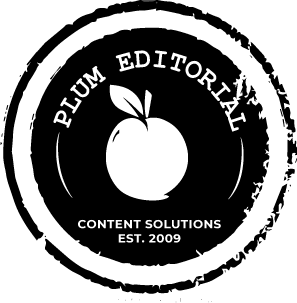Part of what I do for clients, especially publication clients, involves developing content. This content isn’t always something I write — sometimes it’s something I rewrite from submitted press releases. As a result? I open a lot of press releases. I get a lot of emails from marketing professionals out to “sell” their business or venture with subject lines that simply say “press release.” Seriously. By the time I sigh and open them up, I’m already in a bad mood.
Eight things that exasperate journalists:
- Generic subject lines. Understand journalists or content writers are opening hundreds of emails every month. Which subject line do you think gets more attention: “Press release” or “Company ABC debuts medical monitoring robots”? Boom. Now I’m interested and can categorize your email accordingly. Take an extra five seconds and take the opportunity you’re given to reiterate your message in the subject line. Why wouldn’t you? It’s free!
- Embedded photos in your email or press release. Reporters love it when they are working on deadline and can’t save your photo as a separate element before sending it along to production. The temptation is not to run your photo at all. Always send your labeled photo as a separate, jpeg attachment. Don’t be tempted to scan a brochure and email it along as your press release: those are for a different target audience. Media types can’t copy and paste that text onto their screen to rewrite your information and get publicity for you. Help us help you.
- Sending your press release and photo in two separate emails. This does actually happen. I’m not sure why. Please understand that your press releases are likely getting forwarded around a newsroom until they land at the correct person’s desk. When you don’t send your pitch as a same-day, total package, it causes confusion as people look — again, through hundreds of emails — for what they need. And so they’re not going to look, quite frankly. You may be missing out on your piece getting more page space.
- Not proofreading your press release, and then sending a second version. Please be sure your piece is perfect before you send out a mass email. Get approval from everyone involved. Take extra time if you need; otherwise everyone on your media list has to go backtracking to fix an item they thought they’d finished with.
- Asking when an item will run. We assume you are familiar with the publication, when it comes out, and care enough to put a note on your calendar to watch for it. Promising a date for an item to run can backfire if sections get cut. If it doesn’t run? Please don’t resend. If it still doesn’t run? A phone call, at that stage, can be helpful to follow up.
- Sending out items that have nothing to do with the publication or its readership. In these days of the internet, a quick website search can familiarize you with publications, their reach, and their subject matter. To send news of a collectibles chain store opening in Philadelphia to an Omaha-based trade publication for gardeners and landscapers is probably is a waste of everyone’s time. And this kind of “throw it out and see where it sticks” mentality is bad for your brand.
- Asking to “confirm receipt” of your email. Doing this can open up the “When will it run?” emails back and forth, which no one has time for.
- Sending incomplete captions, or no photo captions at all. Your item should be ready for layout. That includes people’s names, their titles, and if they’re standing left to right.
As a final tip: putting a copy of your press release in the body of the email — instead of or in addition to a Word attachment — is greatly helpful. It tells writers you know they deal with a lot, and offers a quick way for them to cut and paste your item onto their screen and get it ready to run.



One thought on “Email press releases (with no aggravation attached)”
Right on.
Comments are closed.